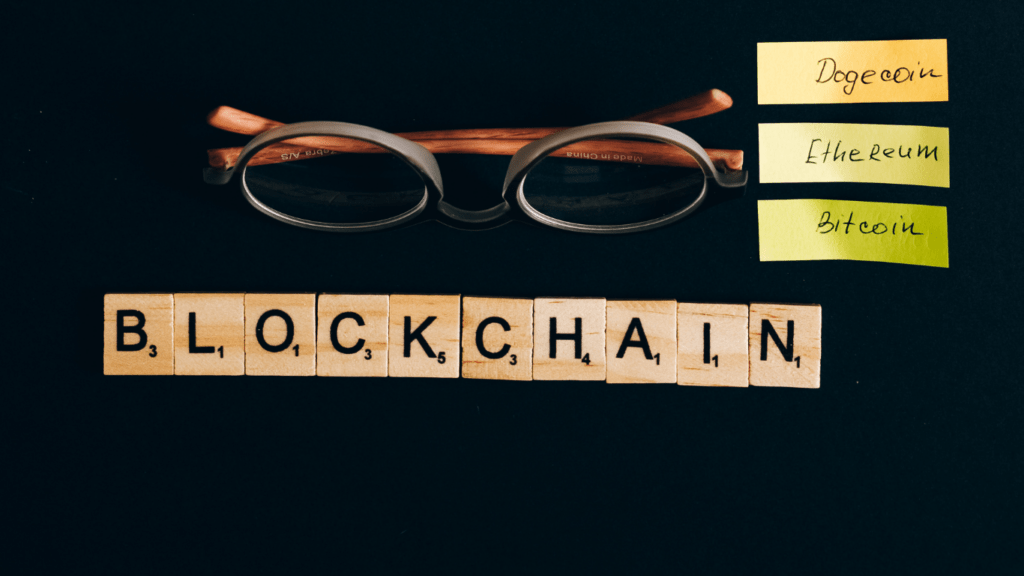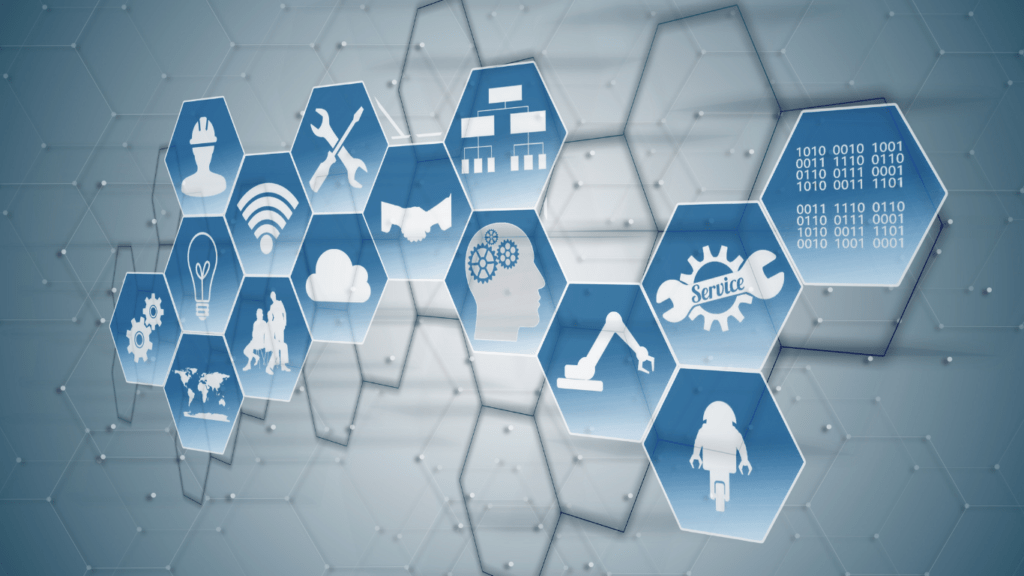What is Blockchain Technology?
Blockchain technology, at its core, is a decentralized ledger that records transactions across multiple computers. This structure ensures that the historical data in the ledger is immutable, providing security and transparency.
Each transaction is packaged into a block, and these blocks are linked together chronologically, forming a chain—hence the name blockchain.
A blockchain operates in a peer-to-peer network, where each participant, or node, maintains a copy of the complete ledger. When a transaction occurs, the network validates it through a consensus mechanism, verifying its authenticity before appending it to the ledger.
Bitcoin, the first application of blockchain technology, introduced the Proof of Work (PoW) consensus mechanism, which requires computational effort to validate transactions and add them to the chain.
Key characteristics of blockchain technology include:
- Decentralization: No single entity controls the entire network. Instead, each node has equal power, eliminating the need for intermediaries.
- Immutability: Once recorded, data within a block can’t be altered without changing subsequent blocks, making tampering detectable.
- Transparency: Transactions are transparent to all network participants, enhancing trust and accountability.
Blockchain applications extend beyond cryptocurrency. Various industries leverage blockchain to enhance security, reduce fraud, and streamline operations. For instance, supply chain management uses blockchain to track goods from origin to destination, ensuring authenticity and reducing counterfeiting.
Finance uses it for faster, cheaper cross-border payments. Healthcare adopts blockchain for secure, immutable patient records.
Understanding these fundamental concepts is crucial for anyone looking to get started with blockchain technology.
Why Learn Blockchain Technology?
Blockchain technology offers several compelling reasons for individuals to invest time and effort in mastering it.
- High Demand for Skilled Professionals
Investing in blockchain skills opens up numerous job opportunities. According to LinkedIn’s 2020 Emerging Jobs Report, blockchain development ranked among the top emerging jobs. In industries like finance and supply chain, organizations increasingly seek professionals with blockchain expertise. - Enhanced Security
Blockchain provides unparalleled security benefits. Its decentralized and immutable nature ensures data integrity, making it ideal for sectors requiring robust security measures. For instance, healthcare providers use blockchain to protect patient records from unauthorized access. - Financial Benefits
Blockchain expertise often leads to lucrative career opportunities. A report by Hired found that blockchain developers earn 50-100% more than traditional developers. Companies value the specialized skills, resulting in premium compensation. - Innovation and Growth
Mastering blockchain allows individuals to contribute to innovative and transformative solutions. From smart contracts to decentralized finance (DeFi), blockchain drives significant advancements, fostering economic growth and technological development. - Wide Range of Applications
Blockchain’s versatility makes it an essential skill across multiple domains. Aside from finance and supply chain management, it spans healthcare, real estate, and even voting systems. Each application leverages blockchain’s key features, such as transparency and decentralization, to improve efficiency and trust. - Future-Proofing Skills
Learning blockchain provides a competitive advantage as industries continuously evolve. As businesses adopt more blockchain-based solutions, having this knowledge ensures long-term career relevance. It’s an investment in a future-proof skill that aligns with technological advancements.
By understanding these key points, individuals can appreciate the substantial advantages of learning blockchain technology.
Essential Components of Blockchain
Blockchain technology is constructed from several key components. Understanding these parts is crucial for anyone looking to dive into this transformative technology.
Cryptography
Cryptography secures the data within the blockchain. It converts plain text into scrambled text through algorithms, making it only readable by those with a decryption key. Public and private keys form the backbone of blockchain security by enabling users to perform secure transactions and authenticate identities. For example, Bitcoin uses SHA-256 hashing to ensure the integrity of data.
Distributed Ledgers
Distributed ledgers allow every participant in the network to have an identical copy of the ledger. This decentralization ensures that all transactions are transparent and cannot be tampered with. Each node in a blockchain network updates simultaneously, maintaining consistency across the board. If changes occur, the entire network must verify and approve them, enhancing security and trust.
Consensus Mechanisms
Consensus mechanisms allow blockchain networks to agree on the validity of transactions. Proof of Work (PoW) and Proof of Stake (PoS) are popular methods. In PoW, miners solve complex mathematical problems to validate transactions and add them to the blockchain, consuming significant computational power. PoS, on the other hand, selects validators based on the number of tokens they hold and are willing to ‘stake’ as collateral. Each method addresses the need for secure, immutable records.
Setting Up Your Blockchain Environment
Understanding blockchain technology is crucial, setting up the right environment is the next step. A well-configured environment ensures a smoother experience with blockchain development.
Choosing the Right Platform
The first step in setting up your blockchain environment is selecting a suitable platform. Ethereum is widely used for its smart contract functionality, while Hyperledger is preferred for enterprise solutions. I recommend analyzing your project’s requirements to choose the platform that best fits your needs.
Installing Necessary Tools
Once you’ve chosen a platform, install the tools required for development. For Ethereum, install Geth or Parity for node implementation, and use Truffle for development. Tools like Docker can also help manage dependencies and environments effectively.
Learning Programming Languages for Blockchain
Understanding different programming languages is crucial for blockchain development. Specific languages enhance efficiency based on the blockchain platform used.
Solidity for Ethereum
Solidity is the primary language for writing smart contracts on Ethereum. This statically-typed language was designed for the Ethereum Virtual Machine (EVM). Solidity combines principles from JavaScript, Python, and C++.
Syntax and Structure: Solidity uses curly braces to define blocks, similar to JavaScript. Contracts contain state variables, functions, and events.
- Example:
function transfer(address _to, uint _value) public returns (bool success).
Development Environment: Install Remix IDE, a popular Solidity development tool. Use Truffle Suite for advanced contract development and testing.
Compiling and Deployment: Utilize solc for compiling contracts and Web3.js for deploying them on the Ethereum blockchain.
Go for Hyperledger Fabric
Go, or Golang, is used extensively with Hyperledger Fabric. This language, known for its concurrency and simplicity, fits well with enterprise-level blockchain solutions.
Syntax and Structure: Go syntax is clean and concise. It uses package declaration and imports to manage dependencies.
- Example:
func invoke(APIstub shim.ChaincodeStubInterface) peer.Response.
Chaincode Development: Write and manage smart contracts, known as chaincode, in Go. Use Fabric SDK for interaction with the blockchain.
Tool Setup: Install Go and set up Fabric tools like Hyperledger Fabric SDK and Docker for an efficient development environment.
Mastering these languages is vital for creating robust blockchain applications.
Building Your First Blockchain Application

Choose a Platform
I start with determining which blockchain platform to use. Ethereum and Hyperledger Fabric are popular choices. Ethereum is ideal for decentralized applications (DApps) with smart contracts. Hyperledger Fabric suits private consortiums needing permissioned networks.
Set Up Development Environment
I install the required software for the selected platform. For Ethereum, I use tools like Truffle, Ganache, and MetaMask. Truffle facilitates writing, compiling, and deploying smart contracts. Ganache provides a local blockchain for development and testing. MetaMask helps to interact with the Ethereum network.
Write Smart Contracts
I write smart contracts using Solidity for Ethereum. For creating a contract, I define functions and state variables. An example is a simple storage contract where I can set and get a value.
pragma solidity ^0.8.0;
contract SimpleStorage {
uint256 storedData;
function set(uint256 x) public {
storedData = x;
}
function get() public view returns (uint256) {
return storedData;
}
}
Test Contracts
I test smart contracts to ensure reliability. Tools like Mocha and Chai help with testing in Truffle. I write unit tests to cover various contract functionalities. For instance:
const SimpleStorage = artifacts.require("SimpleStorage");
contract("SimpleStorage", accounts => {
it("should store the value 89.", async () => {
const simpleStorageInstance = await SimpleStorage.deployed();
await simpleStorageInstance.set(89, { from: accounts[0] });
const storedData = await simpleStorageInstance.get.call();
assert.equal(storedData, 89, "The value 89 was not stored.");
});
});
Deploy Contracts
I deploy the smart contract on the chosen blockchain network. I use Truffle for Ethereum, writing migration scripts to handle it. Deploying requires having an Ethereum client like Infura, and for testing, I use Rinkeby or Ropsten.
Build the Front End
I create a front-end application to interact with the smart contract. I use frameworks like React for this. Web3.js library connects the front end with the Ethereum blockchain.
Interact with the Contract
I write JavaScript code to interact with the deployed contract using Web3.js. Here’s an example:
import Web3 from "web3";
const web3 = new Web3(Web3.givenProvider
|
|
"http://localhost:8545");
const SimpleStorageABI = [ /* ABI array */ ];
const contractAddress = '0xYourContractAddress';
const simpleStorage = new web3.eth.Contract(SimpleStorageABI, contractAddress);
async function setStorageValue(value) {
const accounts = await web3.eth.getAccounts();
await simpleStorage.methods.set(value).send({ from: accounts[0] });
}
async function getStorageValue() {
const result = await simpleStorage.methods.get().call();
console.log("Stored value is: " + result);
}
Monitor and Maintain
I continuously monitor and maintain the blockchain application. I use Ethereum’s tools like Etherscan for tracking transactions and performance monitoring. For Hyperledger Fabric, I manage the network using built-in tools for monitoring.
By following these steps, I can effectively build and deploy a robust blockchain application on my chosen platform.
Joining the Blockchain Community
Engaging with the blockchain community provides invaluable resources and networking opportunities. Knowledge seekers often find communities instrumental for growth and staying updated with the latest trends.
Online Courses and Tutorials
Various online platforms offer blockchain courses. Websites like Coursera, Udemy, and edX provide structured learning paths. Courses often include video instructions, hands-on projects, and quizzes.
Specific platforms, like the Blockchain Council and ConsenSys Academy, specialize in blockchain education. Topics cover blockchain fundamentals, smart contract development, and decentralized application (DApp) creation.
Forums and Networking
Forums offer rich interaction with blockchain experts and enthusiasts. Websites like Reddit, Stack Exchange, and Bitcointalk host active discussions on blockchain topics. These platforms feature sub-forums dedicated to specific interests, like Ethereum development or blockchain security.
Networking extends to social media platforms such as LinkedIn and Twitter, where following thought leaders and participating in discussions help build connections. Attending blockchain conferences and meetups enhances real-world connections, enabling collaboration on projects and sharing insights.



 Founder & CEO
Daniel Anderson is the visionary founder and CEO of the website, leading the charge in revolutionizing the crypto space. With a deep understanding of blockchain technology and years of experience in the industry, Daniel has established himself as a key figure in the cryptocurrency world. His passion for decentralization and financial innovation drives the platform’s mission to deliver cutting-edge insights and resources for crypto enthusiasts, traders, and investors. Under his leadership, the website has grown into a trusted hub for the latest trends, news, and developments in the digital asset space.
Founder & CEO
Daniel Anderson is the visionary founder and CEO of the website, leading the charge in revolutionizing the crypto space. With a deep understanding of blockchain technology and years of experience in the industry, Daniel has established himself as a key figure in the cryptocurrency world. His passion for decentralization and financial innovation drives the platform’s mission to deliver cutting-edge insights and resources for crypto enthusiasts, traders, and investors. Under his leadership, the website has grown into a trusted hub for the latest trends, news, and developments in the digital asset space.
